Available berths 9 Opened 1606 | Owned by Dover Harbour Board Piers 2 | |
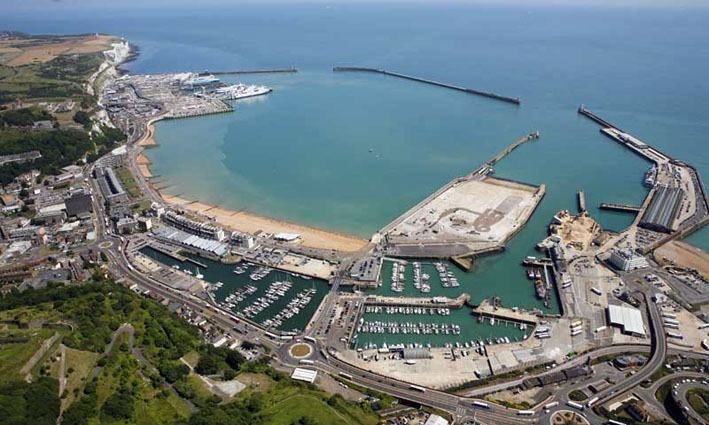 | ||
Similar White Cliffs of Dover, Channel Tunnel, Dover Castle, Dover Western Heights, South Foreland Lighthouse | ||
Port of dover promotional film 2016
The Port of Dover is the cross-channel port situated in Dover, Kent, south-east England. It is the nearest English port to France, at just 34 kilometres (21 mi) away, and is the world's busiest passenger port, with 16 million travellers, 2.1 million lorries, 2.8 million cars and motorcycles and 86,000 coaches passing through it each year, with an annual turnover of £58.5 million a year.
Contents
- Port of dover promotional film 2016
- Port of dover
- Infrastructure
- Eastern Docks
- Eastern Docks history
- Western Docks
- Marina
- Access
- References
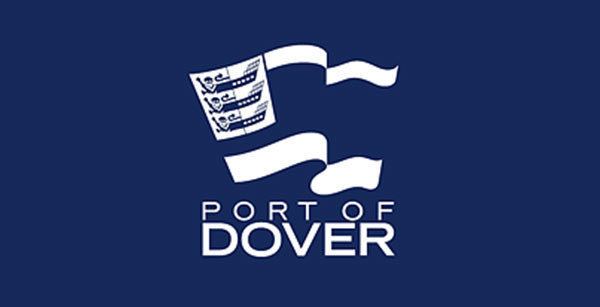
The port has been owned and operated by the Dover Harbour Board, a statutory corporation, since it was formed by Royal Charter in 1606 by King James I. Most of the board members are appointees of the Department for Transport. The port has its own private police force, the Port of Dover Police.
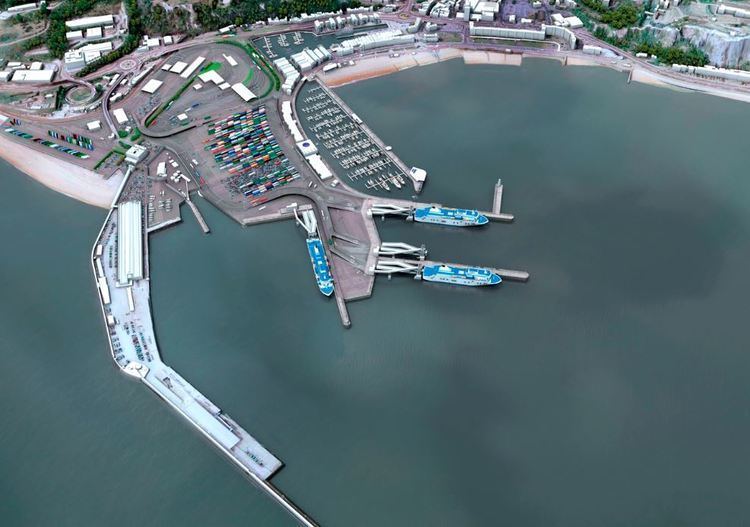
Port of dover
Infrastructure
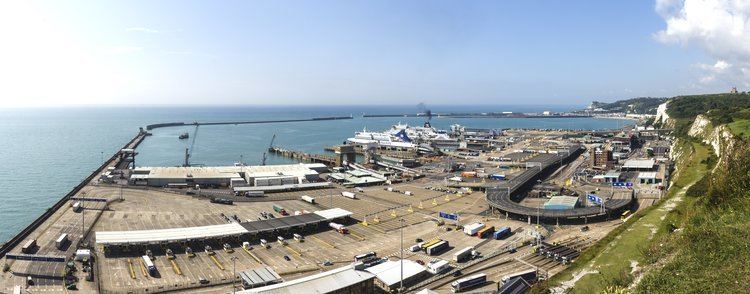
The harbour is divided into two sections, the Eastern Docks and the Western Docks, about 1 kilometre (0.62 mi) apart.
Eastern Docks
There are three ferry services to France operating from the nine docks and associated departure buildings of the Eastern Docks:
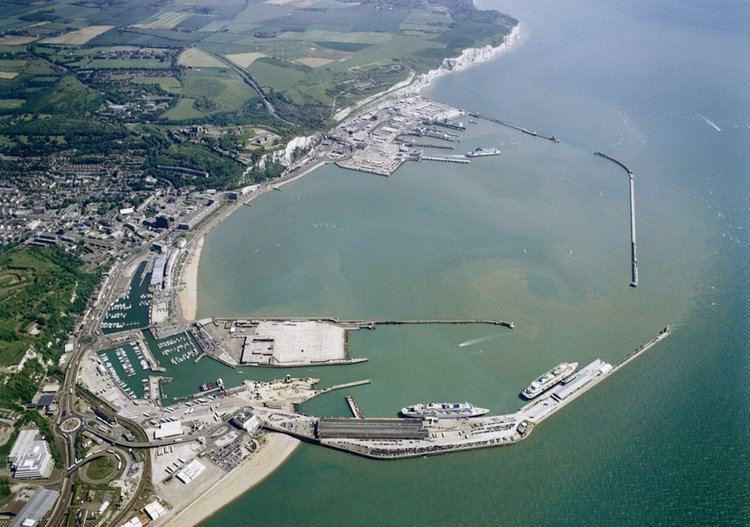
The eastern docks also used to be served by the now defunct MyFerryLink, LD Lines and Sea France.
The adjacent freight terminal (with three loading cranes) can be used by a ship of up to 180 metres (590 ft).
Eastern Docks: history
Dover's eastern docks were used for ship breaking beginning during World War I when the Admiralty began dismantling ships there. The Stanlee Shipbreaking and Salvage Co. Ltd. took over the ship breaking operation commercially in 1920. Many of the ships broken up were naval vessels from the First World War. The company also handled machinery and general scrap, including the dismantling of the Dover Promenade Pier. The yard began to shrink after World War II and was finally forced to close in 1964 to make way for a new car ferry terminal.
In 1966 well over 600,000 accompanied vehicles travelled through Dover's eastern docks en route to France or Belgium.
Western Docks
This part of the port is formed by the western arm of the harbour, Admiralty Pier, and its associated port facilities. It was initially used as a terminal for the Golden Arrow and other cross-channel train services (with its own railway station, Dover Marine, later renamed Dover Western Docks) – it was here that the Unknown Warrior was landed. The railway station closed in 1994. The Western Docks were also used from 1968 to the early 2000s for a cross-channel hovercraft service run by Hoverspeed. Hoverspeed also ran catamaran services until being declared bankrupt in 2005. Another catamaran service ran from 2004 until November 2008 run by the single ship of SpeedFerries, SpeedOne, with up to five services daily to Boulogne-sur-Mer. The Hoverport has now been demolished for re-development.
The railway station, with its platforms filled in to create a roofed car park and new buildings added, re-opened as the Dover Cruise Terminal in the 1990s. It can accommodate up to three cruise ships at a time.
Marina
In the north Docks, between the cruise terminal and the former Hoverport is the entrance to a boating harbour.
Access
The port is accessible by road from the M20/A20 (leading to Folkestone) and the M2/A2 (to Canterbury), and by train from the town's railway station (Dover Priory is a 20-minute walk away - the port bus no longer runs. From here, there are trains from Dover Priory to London St Pancras International via Folkestone Central, Ashford International, Ebbsfleet International, Stratford International as well as trains to London Victoria or London Charing Cross via Canterbury East and the Medway towns such as Gillingham, Chatham and Rochester or via Ashford International then either via Tonbridge and Sevenoaks or Maidstone East. There are trains to Deal and Ramsgate.
